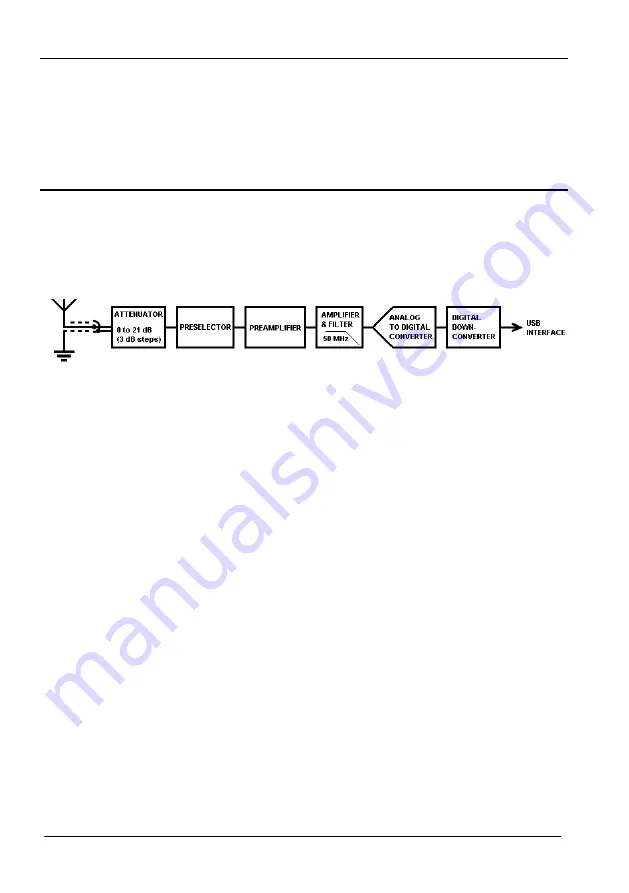
WiNRADiO G33DDC HF Receiver
20
Should you encounter interference-related problems with your receiver,
effective remedies do exist; please peruse
Appendix D
– Dealing with
Interference
.
Inside the
Excalibur Pro
L
et’s have a look at what’s inside this receiver and how it relates to the
graphical user interface of the control application. Here is a simplified
functional block diagram of the hardware portion of the receiver:
Immediately after the antenna and its associated protective and impedance-
matching circuitry, there is the
Attenuator
. The attenuator is adjustable from
zero to 21 dB in 3 dB increments and serves to reduce signal levels in the
proximity of strong stations and can be operated either manually, or left to the
receiver to determine its optimum level automatically to avoid overloading.
The
Preselector
contains a bank of user-configurable filters that can be used
to filter out strong frequencies in the vicinity of the received signal, and so
reduce overloading and intermodulation distortion.
The signal then passes through a low-noise and low-distortion two-stage
amplifier whose first stage can be enabled or disabled by the user. When
enabled, this adds approximately 10 dB of amplification, making it possible to
achieve higher sensitivity (at the expense of strong signal handling capability).
Following the amplifier is an
anti-aliasing filter
necessary for the digitization,
and then into a 16-bit analog-to-digital converter which samples the input
signal at 100 MSPS (megasamples per second), producing a steady stream of
digital data for the subsequent
Digital Down-Converter
(
DDC
).
The digital data then proceeds via the USB interface to the computer which
provides all the additional processing, filtering, demodulation, signal strength
measurement, squelch, noise blanking, notch, audio filtering and other
functions.
















































